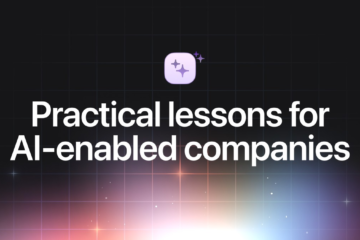Exploring the array of SOC automation tools and trends can be daunting, especially with the rapid emergence of new artificial intelligence technologies in 2024. Security Operations Centers (SOCs) must adapt to this dynamic environment by embracing and effectively implementing AI-driven automation to efficiently triage alerts and incidents.
Let’s delve into the current challenges, benefits, best practices, and key tools shaping SOC automation today, from autonomous SOC solutions to new SOAR solutions and AI co-pilots.
Current Challenges Driving New Strategies for SOC Automation
Cybersecurity Talent Shortages: The significant lack of skilled cybersecurity professionals hinders SOCs from managing and mitigating threats efficiently.
High Alert Volume: The expanding attack surface leads to a higher volume of alerts, making it difficult for SOCs to differentiate between false positives and genuine threats, increasing the risk for organizations.
Challenges of Manual Monitoring and Response: Manual security processes are slow and error-prone, impeding effective incident response. This includes traditional memory forensics, which requires specific skills, time, and processes using industry tools.
Benefits of Enhancing Automation in Security Operations
Automation enhances operational efficiency by streamlining threat detection and response, reducing manual effort and time. It also offers cost savings by minimizing the need for extensive personnel and reducing error-related expenses. Furthermore, automation provides scalability to adapt to evolving security demands without significant additional resource investment.
While many security teams have automated some processes, most alerts still require human intervention for triage and resolution. Incomplete automation often leads to gaps, necessitating reliance on outsourced SOC services for triage and response.
SOC Automation vs Outsourcing
The decision between fully automating your SOC or outsourcing to a third-party provider like an MDR service depends on factors such as control and customization, cost implications, expertise and resources, and security and compliance requirements. Each option has its merits, with the right choice based on the organization’s specific needs, budget, and strategic goals.
Some MDRs offer expert services beyond alert triage and SOC process management, such as strategic advice for risk reduction.
Autonomous SOC
Autonomous SOC or AI-SOC platforms aim to address the skill gaps in cybersecurity teams by leveraging artificial intelligence to mimic human analysts’ decision-making and investigative skills. These systems focus on automating Tier 1 or 2 tasks for various alerts, enhancing alert triage processes.
Autonomous SOCs can replace traditional managed services or automate internal team functions, allowing security professionals to focus on critical threats by reducing repetitive tasks and alert fatigue. This boosts efficiency and improves the analysis of security alerts, reducing overall risk.
Example vendors: Intezer, Dropzone, Radiant
Tip: When choosing an Autonomous SOC vendor, consider the company’s maturity, accuracy of escalations, and alignment of capabilities with actual performance.
SOAR
SOAR tools play a crucial role in modern SOCs by enhancing case management and automating responses. They excel in organizing and managing incident response activities, allowing for systematic tracking from detection to resolution. SOAR tools enable the creation and implementation of incident response playbooks to automate tasks, improve response times, and reduce human error.
New Autonomous SOC solutions offer distinct benefits from SOAR tools, complementing existing automation workflows. Integrating these automation products can leverage AI decision-making along with customized playbooks.
Example vendors: Tines, XSOAR, Splunk, Torq
Tip: Many SIEM or XDR tools include playbook or workflow creation components, potentially eliminating the need for a standalone SOAR tool. Verify supported integrations for SOC automation.
AI Co-Pilots
AI Co-Pilots serve as AI analyst assistants, focusing on complex security investigations by utilizing generative AI to manage large amounts of data. They provide context for deeper analysis of security incidents, supporting analysts through investigations and aiding in informed decision-making based on enhanced data insights.
Example vendors: Microsoft Security Co-Pilot, Crowdstrike Charlotte AI, SentinelOne Purple AI
Tip: Create an internal cheat sheet with prompts for AI Co-Pilot usage to fully leverage its capabilities.
Designing a Modern SOC Automation Strategy

A comprehensive SOC automation strategy should leverage the strengths of specific tools for designated tasks:
-
- Automate Alert Triage: Use Autonomous SOC tools to sift through alerts and escalate only those requiring human analysis, effectively managing alert volume and reducing time spent on false positives.
-
- Manage Cases and Automate Responses: Implement SOAR tools for case management and automated responses based on input from Autonomous SOC tools, such as blocking suspicious IP addresses.
-
- Enhance Investigation of Escalated Alerts: Deploy AI Co-Pilots to assist analysts in investigating complex alerts, providing detailed insights for informed decision-making.
When deploying these tools, focus on automating the most critical need based on your SOC’s specific requirements:
-
- If case management is a bottleneck, prioritize implementing SOAR.
-
- If alert volume is overwhelming, integrate an Autonomous SOC.
-
- For enhanced investigations, consider adding AI Co-Pilots.
An effective strategy uses a layered approach with AI and automation tools, starting with the most critical need for phased integration.
Best Practices for SOC Automation in 2024
SOC automation tools may seem overwhelming with various AI features, but understanding and deploying tools like Autonomous SOCs, SOAR platforms, and AI Co-Pilots can transform security operations. These solutions streamline processes and empower teams to prioritize and address critical threats effectively.
Implementing the right mix of automation tools helps manage alert volumes, automate tasks, and ensure thorough investigation of complex threats, enhancing efficiency and accuracy within the SOC.
Learn more about how Intezer’s Autonomous SOC platform addresses cybersecurity talent scarcity, enhancing SOC performance without constant human supervision.
Explore an interactive product tour or book a demo to discover how Intezer’s offerings can enhance your security posture through automation.


